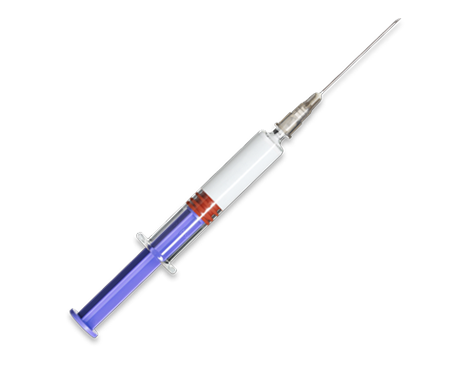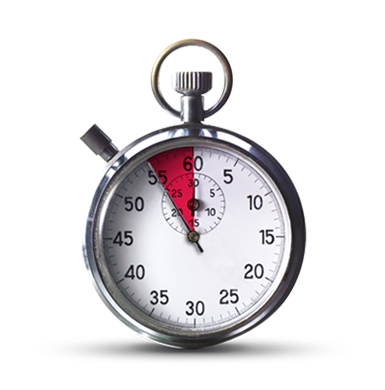Breastfeeding

Are you breastfeeding? Want to avoid hormones?
The diaphragm & ring are safe & hormone-free birth control options.
*While breastfeeding, there are safe birth control pills and IUDs that do not contain hormones that you can also use.
Cost

Don’t want to spend much on birth control?
Condoms are a cheap & effective option for you.
*You can also check with your healthcare provider to find out their reimbursement policies on other birth control methods to see which is most cost-effective.
Easy Maintenance

Don’t want to have a lot of birth control responsibilities?
The ring, the IUD or IUS, the implant, the patch & the shot are all convenient options for you.
Emergency Situations

Something has gone wrong? Forgot to use birth control?
The morning after pill is an option for you.
Forgetful

Don’t want to remember to take a pill every day?
The patch, the shot & the IUD or IUS and the implant are long-lasting options for you.
Long-Acting Reversible Contraception

Don’t want to have to think about birth control every day?
The IUD, IUS or the implant are long-lasting birth control options.
Not Wanting To Insert Birth Control

Don’t want anything inserted inside you?
The pill, the patch, the shot, condoms & the calendar method are options for you.
Possible Side Effects of Hormones

Do you experience side effects from hormones?
The calendar method, long acting reversible contraception, the implant, condoms & diaphragms are hormone-free options for you.
Sexually Transmitted Infections (STIs)

Want to avoid sexually transmitted infections (STIs)?
Condoms will protect you against STIs.
Calendar Method

What is it ?
- A female pays attention to her menstrual cycle in order to determine the timing of her ovulation.
- Unprotected sex should be avoided when she is fertile.
How does it work ?
- A female determines the start of her fertility period by subtracting 20 days from her shortest menstrual cycle. To determine the end of the fertility period, she subtracts 10 days from her longest menstrual cycle.
- Requires a few months of observation to determine your menstrual cycle.
- Most effective when combined with the pull-out method.
Effectiveness
- The calendar method is less effective than most other methods & is NOT recommended.
PROS
- Allows the female to know her body & follow her menstrual cycle.
- The information on fertility may help with future pregnancy planning.
- There is no time delay to become pregnant.
- No cost.
- No hormones.
CONS
- Demands motivation, willingness & a period of abstinence.
- Requires time & effort to learn the calendar method.
- Affects sexual spontaneity.
- Does not protect against sexually transmitted infections (STIs).
- Not an option for females who have irregular menstrual cycles or post-partum.
- The effectiveness depends greatly on a female’s motivation & experience.
Condoms

What are they ?
- A soft, disposable, thin cover that fits over the erect penis.
- Most are latex, but non-latex condoms are also available.
- Available in several stores, pharmacies & online.
How do they work ?
- Acts as a shield to prevent direct genital contact & the exchange of sexual fluids (pre-cum, semen, vaginal discharge)
- A new condom is used for each new sexual act. This includes oral, anal & vaginal sex with the same or a new partner.
Effectiveness
- The condom is 98% effective when used correctly.
PROS
- Available without a prescription.
- Available in different sizes, shapes, thicknesses, colours & flavours.
- Only method offering protection against most sexually transmitted infections (STIs).
CONS
- Must be available at time of sex & may reduce spontaneity.
- May slip or break if not used properly.
- It is possible to have reduced sensitivity for either partner.
Diaphragm

What is it ?
- A small cup made of silicone that is inserted in to the vagina.
- Spermicide is used with the cup to offer protection against sperm.
How does it work ?
- The diaphragm is put inside the vagina any time before sex & kept in the vagina for at least 6 hours after sex & no more than 24 hours.
- Spermicide has to be used with the diaphragm for it to work.
- If you have sex again within 6 hours, you have to add more spermicide into your vagina without taking out the diaphragm.
- The diaphragm & spermicide keep sperm from entering the uterus.
Effectiveness
- It is 86% effective for females who have never given birth before.
- It is 71% effective for females who have given birth before.
PROS
- Can be put inside the vagina hours in advance, so that it does not interfere in the moment.
- Can be used while breastfeeding.
CONS
- Does not protect against sexually transmitted infections (STIs).
- Can cause irritation.
- Can be hard to insert.
- May move during sex.
- Increases risk of recurrent urinary tract infections.
- Spermicides must be added after a male ejaculates if you plan to have sex again. If it is within 6 hours of having sex the first time, then it must be added without taking out the diaphragm.
- Cannot be removed from the vagina until at least 6 hours after sex.
Female Sterilization

What is it ?
- A permanent surgical procedure to close or block the fallopian tubes (tubes that carry the egg from the ovary to the uterus).
How does it work ?
- The fallopian tubes are closed or blocked so that the sperm & egg can no longer meet.
- Fallopian tubes may be blocked by using one of the following: clip or ring, cauterization, ligation, or micro-implants.
Effectiveness
- 99.5% effective.
- Failure rates vary depending on the type of procedure.
PROS
- No birth control routine required.
- Does not interfere with sex.
- No significant long-term side effects.
- No hormones.
CONS
- Depending on the surgical procedure, it is usually permanent.
- May have regrets about the procedure later on.
- Possible short-term surgery-related complications.
- If pregnancy occurs, there is a higher chance of an ectopic pregnancy.
- Does not protect against sexually transmitted infections (STIs).
Implant

What is it ?
- The implant is a long-term birth control option. The implant is a rod that is placed just under the skin of your non-dominant upper arm by a healthcare professional. The rod is flexible and approximately the size of a matchstick.
How does it work ?
- The insertion only takes a few minutes. The implant slowly releases progestogen into your bloodstream which stops an egg from being released by your ovary and prevents sperm from reaching the egg. It will also change the lining of your uterus to prevent a fertilized egg from implanting itself. The implant must be removed by a healthcare professional after 3 years.
Effectiveness
- It is more that 99% effective.
PROS
- The implant lasts 3 years and can be removed at any time. Once removed, you should return to fertility right away, which means that you should go back to being able to get pregnant right away.
- Can be used by those who can’t take oestrogen.
- You don’t have to worry about remembering to take it every day.
- Safe while breastfeeding and will not have an impact on your breastmilk.
CONS
- When you first get the implant inserted, you can experience slight bruising and some swelling.
- Does not protect against Sexually Transmitted Infections (STIs).
- You have to go see a healthcare professional to get the implant inserted.
- Your monthly menstruation/period can become irregular, lighter, or heavier.
- COMMON SIDE-EFFECTS: Headache, Vaginitis (inflammation of the vagina), Mood swings, Weight gain, Headache, Acne and Depression.
Injection – The Shot

What is it ?
- An injection that is given in the arm or butt every 3 months.
How does it work ?
- Prevents the ovaries from releasing an egg & makes it more difficult for sperm to be effective.
- Contains only progestogen.
- Requires a prescription & injection must be given by a healthcare professional.
- May completely stop periods over a prolonged use.
Effectiveness
- 99.7% effective in preventing pregnancy when used properly.
PROS
- Highly effective.
- Does not contain estrogen & can be used by females over 35 who smoke.
- Only needed 4 times per year.
- May be suitable for breastfeeding females.
- It may help with symptoms of endometriosis & decreases the risk of endometrial cancer.
CONS
- Does not protect against sexually transmitted infections (STIs).
- Possible side effects include: irregular bleeding, temporary decrease in bone mineral density & weight gain.
- May cause a delay in getting pregnant when it is stopped. It can take up to a year for your period to return to normal after the last injection.
Intrauterine Device (IUD) / Intrauterine System (IUS)

What is it ?
- A “T” shaped device inserted into the uterus.
- A long-acting method of reversible birth control that can remain in place for up to 5 years.
- One of the most widely used birth control methods, with over 180 million users worldwide.
How does it work ?
- Decreases sperm’s ability to fertilize an egg & to get through the cervical mucus.
- Must be inserted & removed by a health-care professional.
Effectiveness
- 99.1% effective in preventing pregnancy when used properly.
PROS
- Long-acting (can be left in place for up to 5 years).
- No daily maintenance required.
- Does not interfere with vaginal sex.
- May reduce the risk of endometrial cancer.
CONS
- Does not protect against sexually transmitted infections (STIs).
- Possible side effects include: irregular bleeding or spotting in the first months after insertion, increased menstrual bleeding, or menstrual cramping.
- Insertion may be uncomfortable or slightly painful. In rare cases, perforation of the uterus may occur when inserted.
- Should not be inserted in females who have had an STI or pelvic infection within the last 3 months.
- In rare cases, may fall out of the uterus.
Pull-Out Method

What is it ?
- Taking the penis out from the vagina before ejaculation.
- Can be combined with other birth control methods.
- Does not protect against sexually transmitted infections (STIs).
How does it work ?
- When a male feels he is close to orgasm, he removes his penis from the vagina before ejaculating.
- Hypothetically, pulling out keeps semen from being released inside the vagina.
Effectiveness
- The pull-out method is less effective than most other methods & is NOT recommended.
PROS
- No cost.
- Can be used at any time.
- Can be combined with any other birth control method.
CONS
- Offers no protection against most sexually transmitted infections (STIs).
- Does not stop pre-cum from entering the vagina (both semen & pre-cum contain sperm). This can lead to a pregnancy. If the male does not remove his penis in time before he begins ejaculating, this method does not protect against pregnancy.
The Morning After Pill

What is it ?
- Emergency birth control taken after having had unprotected sex to prevent pregnancy.
How does it work ?
- Changes the mucus in a female’s cervix to keep sperm from reaching the eggs.
- Makes it more difficult for a fertilized egg to implant in the uterus by thinning the uterus lining.
- Stops or delays ovulation.
- Best used as soon as possible after sex.
Effectiveness
- 99% effective in preventing pregnancy when used within 24 hours.
- Must be taken within 5 days. Is less effective the longer a female waits after sex.
PROS
- A good back-up solution when a female has had unprotected sex, or when other birth control methods have failed (for example, a broken condom).
- Generally easy to get from a doctor, health care center, walk-in clinic, a birth control/sexual health clinic, or directly from a pharmacist.
CONS
- Possible side effects include feeling nauseous & vomiting.
- If a female vomits within an hour of taking the morning after pill, she needs to take another dose.
- Less effective than other birth control methods.
- Does not protect against sexually transmitted infections (STIs).
- This is not an abortion method. It only works if you’re not already pregnant.
The Patch

What is it ?
- A small patch that is applied on the skin to protect against unwanted pregnancy.
- A patch is applied once a week, for 3 weeks. No patch is applied on the fourth week to let the a female’s period occur. This is then repeated (3 weeks on, 1 week off).
- 2 hormones (estrogen & progestin) are released slowly & absorbed through the skin.
How does it work ?
- Prevents the ovaries from releasing an egg & makes it more difficult for sperm to be effective.
- Patches work by releasing estrogen & progestogen through the skin.
- Patches require a prescription.
Effectiveness
- 99.7% effective in preventing pregnancy when used properly.
PROS
- Highly effective method.
- Only need to apply patch once a week.
- Makes periods more regular & decreases menstrual cramping.
- The patch is sticky enough to resist water & sweat.
- May reduce the risk of endometrial, ovarian & colon cancer.
CONS
- Does not protect against sexually transmitted infections (STIs).
- Possible side effects include: irregular bleeding or spotting, breast tenderness, headaches, skin irritation where the patch is applied & increased risk of blood clots.
The Pill / Oral Contraception

What are they ?
- Oral contraception, otherwise known as the pill, is designed to prevent pregnancies.
- Pills are taken daily, one pill per day.
- Used by over 100 million females worldwide.
How do they work ?
- Prevent the ovaries from releasing an egg & make it more difficult for sperm to be effective.
- Most pills contain estrogen & progestogen, but progestogen-only pills are also available.
- Requires a prescription.
Effectiveness
- 99.7% effective in preventing pregnancy when used properly.
PROS
- Periods can become more regular.
- Decreases menstrual cramping.
- Reduces acne & some body hair growth.
- Decreases risk of ovarian cancer, as well as of cancer of the inner lining of the uterus (endometrial cancer).
CONS
- Must remember to take at the same time everyday.
- Does not protect against sexually transmitted infections (STIs).
- Some possible side effects include: irregular bleeding or spotting, nausea, bloating, breast tenderness & headaches.
- Female smokers over the age of 35 should not use the pill.
- May increase the risk of blood clots.
The Ring

What is it ?
- A flexible ring that is around 5.4 cm wide.
- Ring is inserted in the vagina, where it stays for 3 weeks. After 3 weeks, the ring is removed for 1 week. This is then repeated with a new ring (3 weeks on, 1 week off).
How does it work ?
- Prevents the ovaries from releasing an egg & makes it more difficult for sperm to be effective.
- Ring works by releasing estrogen & progestogen, which are then absorbed through the vagina.
- Requires a prescription.
Effectiveness
- 99.7% effective in preventing pregnancy when used properly.
PROS
- Highly effective birth control.
- Only need to insert it once a month.
- Makes periods more regular.
- Does not interfere with sex.
CONS
- Does not protect against sexually transmitted infections (STIs).
- Possible side effects include: irregular bleeding or spotting, nausea, breast tenderness, headache, vaginal discomfort, or irritation (uncommon).
- The ring can fall out, but this is uncommon.
Vasectomy

What is it ?
- A surgical procedure to block the tubes that carry spermatozoids from the testicles.
How does it work ?
- After the tubes are closed, no spermatozoids are released when a male ejaculates. As a result, spermatozoids can no longer fertilize the female’s egg.
Effectiveness
- 99.9% effective.
PROS
- Allows the male partner to assume responsibility for birth control.
- No birth control routine necessary.
- Does not interfere with sex.
- No significant long-term side effects.
- Less invasive, fewer complications & more cost-effective than female sterilization.
CONS
- Difficult & expensive to reverse.
- May have regrets about the procedure later on.
- Possible short-term surgery-related complications.
- Does not protect against sexually transmitted infections (STIs).
- May not be effective immediately. Back-up birth control must be used between the time of surgery & the follow-up semen analysis to confirm that there are no spermatozoids (2-3 months).



